A Day Trip to Shirakawa-go, a Magical Mountain Village in Japan
A UNESCO World Heritage Site, Shirakawa-go is a part rustic, part magical village, nestled in an alpine valley that’s surrounded by mountains. It’s best known for its Gassho-Zukuri houses — this refers to the thatched roofs which, believe it or not, are constructed without a single nail.
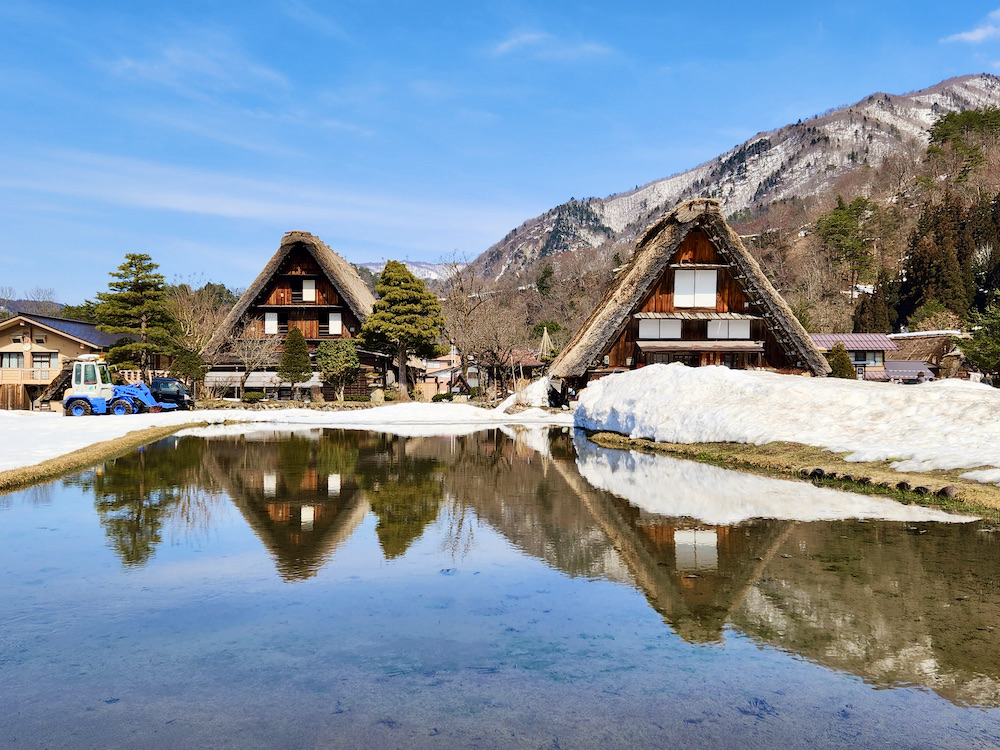
Boasting years of history, the roofs are built to withstand winter’s heavy snowfall. The triangle roofs are shaped based on its Gass-ho Zukuri namesake, which means “hands in prayer”. Interestingly, whenever a roof is re-thatched, the entire village comes together to do so. Talk about community, huh!
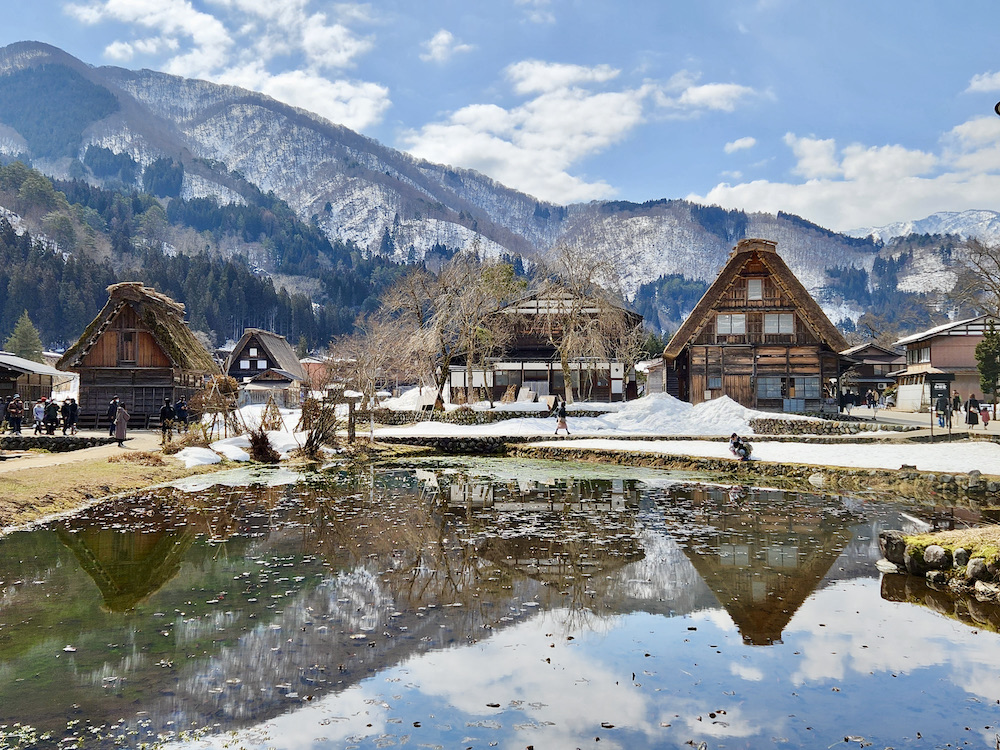
There are two such villages in Japan — the more touristy Shirakawa-go (also known as Ogimachi Village), and the lesser-visited Gokayama (also known as Suganuma Village). About 100 Gass-ho Zukuri houses can be found in the former, with a rough population of 1,500. The latter, on the other hand, only has about nine such houses.
It’s easy to see the whole of Shirakawa-go in just two to three hours; however, if you visit in January or February, consider spending the night for the winter illumination light-up event.
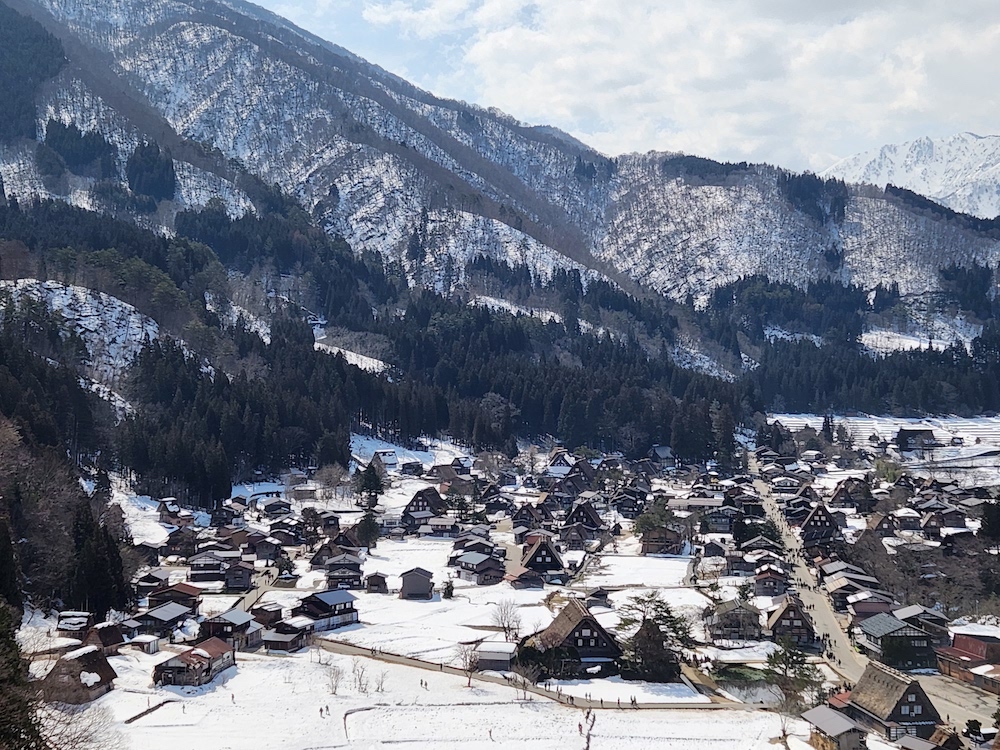
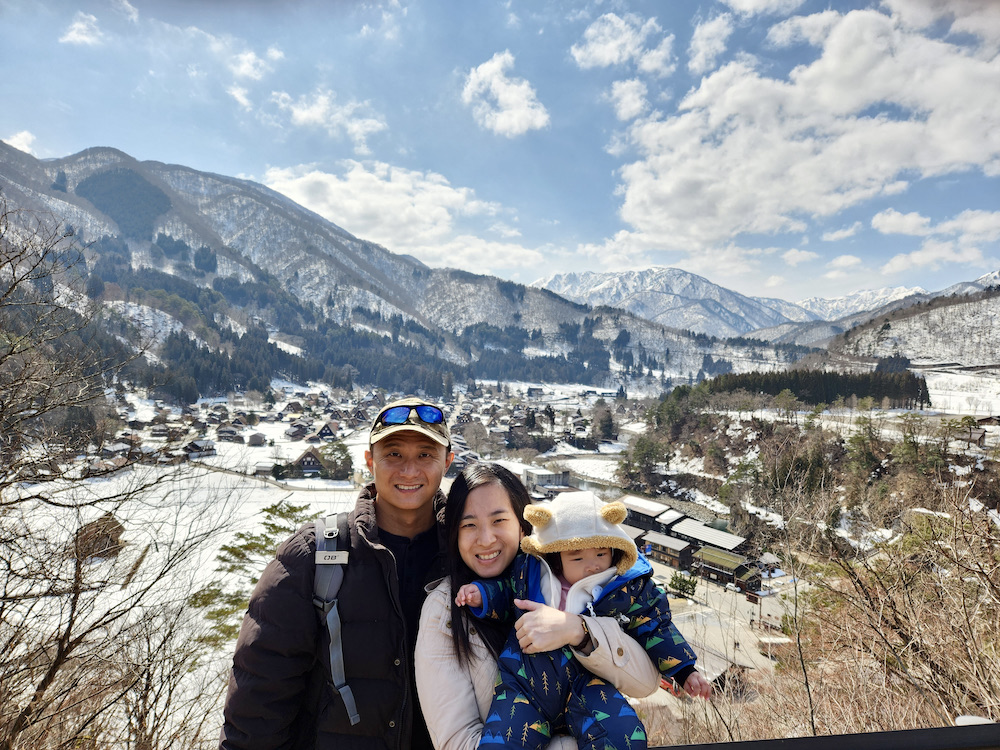
When you first arrive, head for the Shiroyama observation point for a gorgeous aerial view of the village. You can either take an uphill 20-minute walk up to the observatory, or catch a 10-minute shuttle bus for JPY200 (~SGD2).
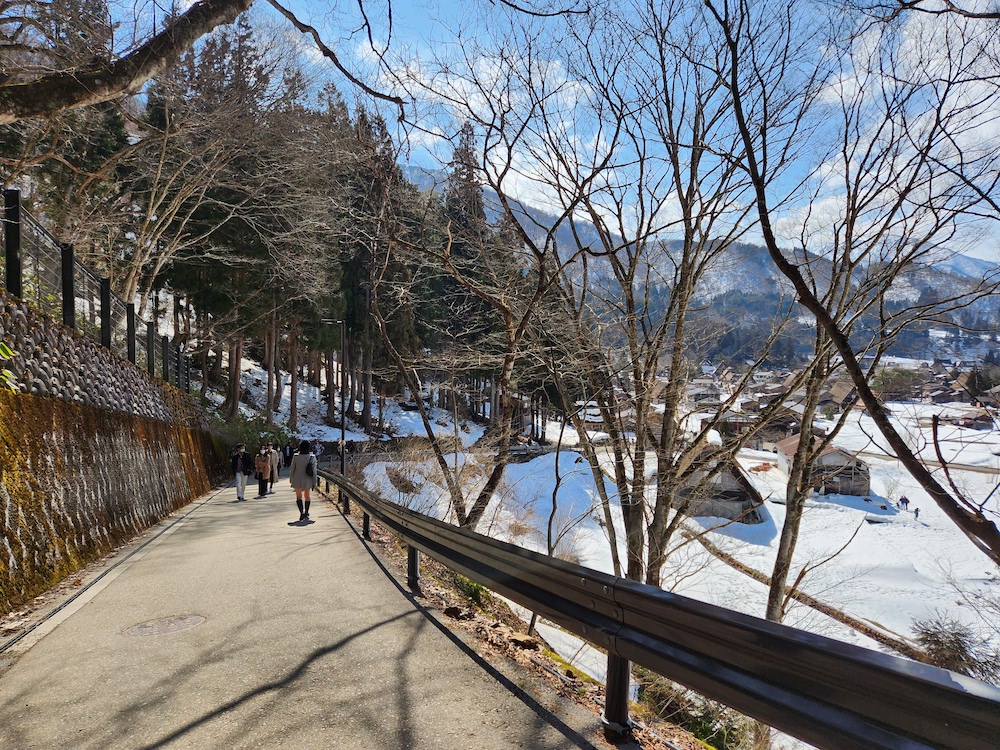
Do note that the footpath is closed in the winter, but the bus runs throughout the year. We recommend taking the shuttle bus up, before taking a leisurely walk back down to the village.
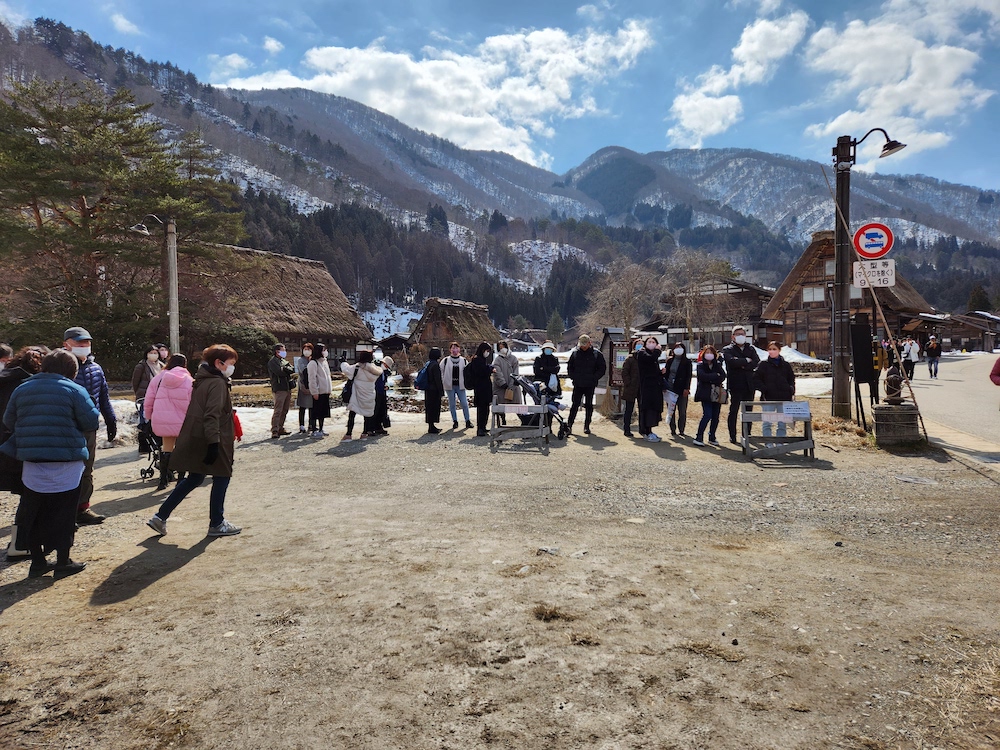
Expect to join a queue for the bus and, if the bus is full before you can get on, you'll have to wait for the next one to come around.
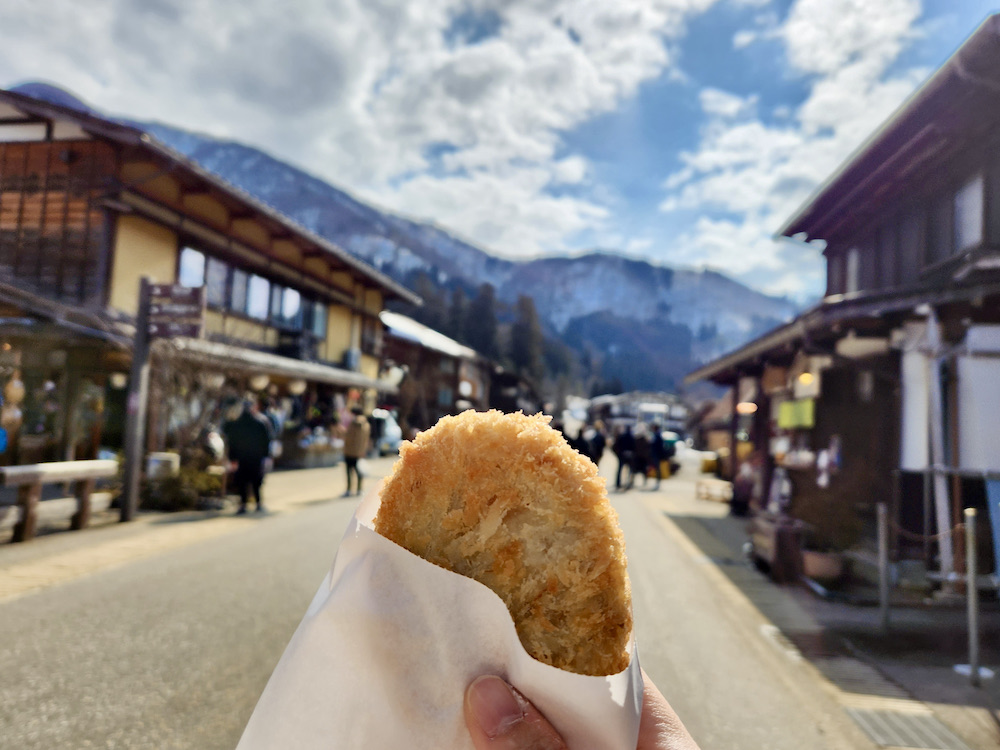
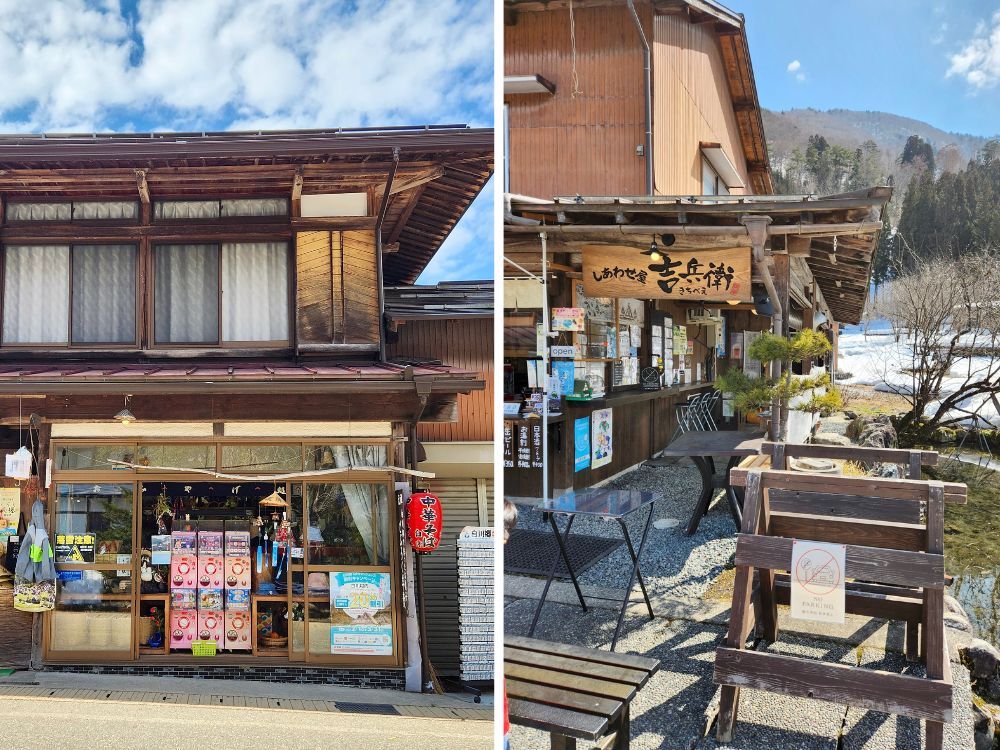
Once you’re back in the village, take your time to wander around and explore. You’ll find plenty of restaurants, shops, and stalls along Shirakawa Kaido, the village’s main thoroughfare. The Gifu region is best known for its Hida beef; seize the chance to sample some succulent beef skewers, potato croquettes, or the local Gohei Mochi snack.
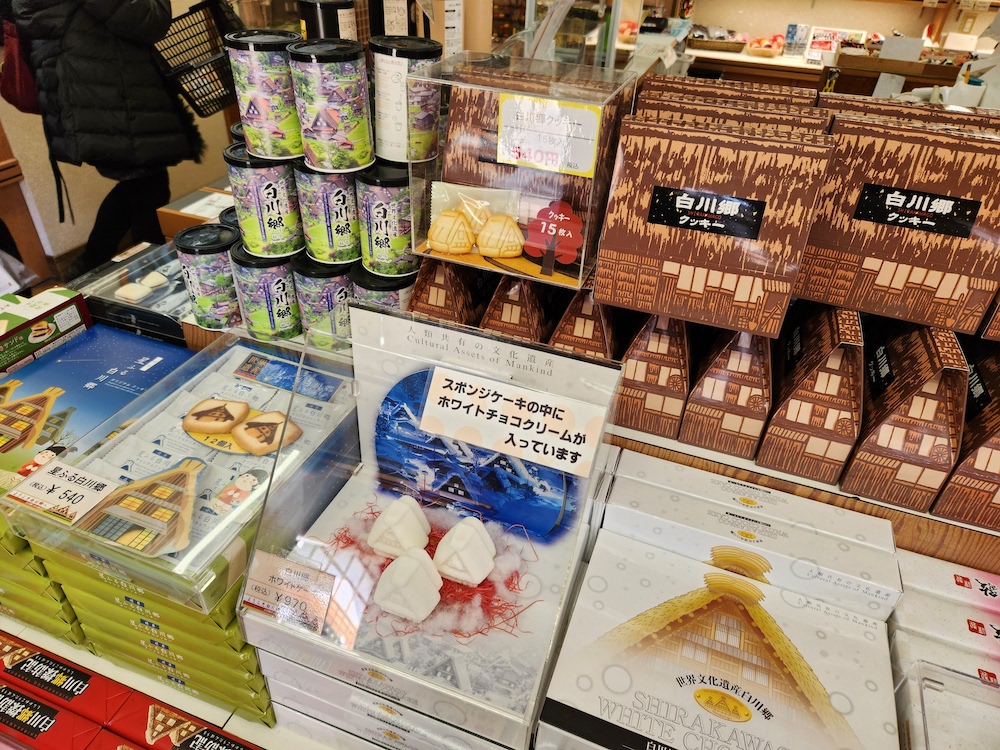
Grab some biscuits as souvenirs or, if you’d like, you can even enjoy some respite at the Shirakawago-no-yu hot spring.
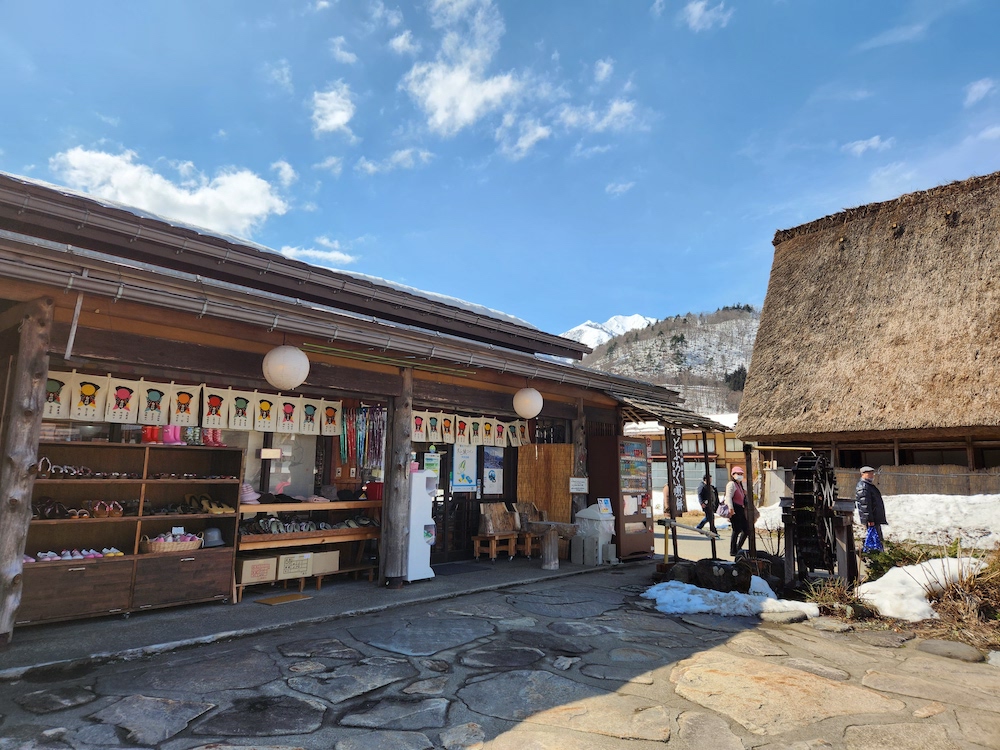
You can also grab a Saru-bobo doll in the shape of a baby monkey. This is the Gifu prefecture's traditional doll, and is a popular gift among the Japanese.
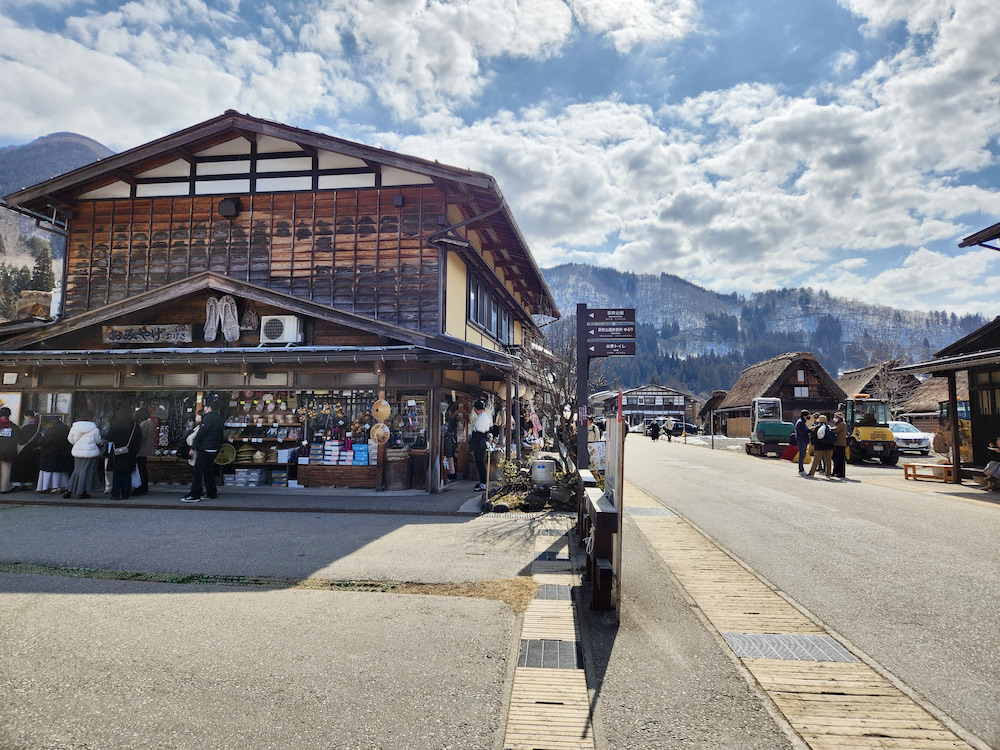
Shirakawa Kaido is also where you’ll find the most tourists. Venture just a street away, however, and you’ll be greeted with idyllic landscapes. Don’t miss out on viewing one of the Gassho-Zukuri houses: there are three that are open to the public.
Check out the Wada House, which is the largest one in the village. The Wada family still resides in the house to date, but has opened up the second and third floors for public viewing with a nominal fee. The Kanda House allows visitors to view its first to fourth floors, while the Nagase House (also known as the tallest farmhouse in the village) offers all of its five floors for public viewing.
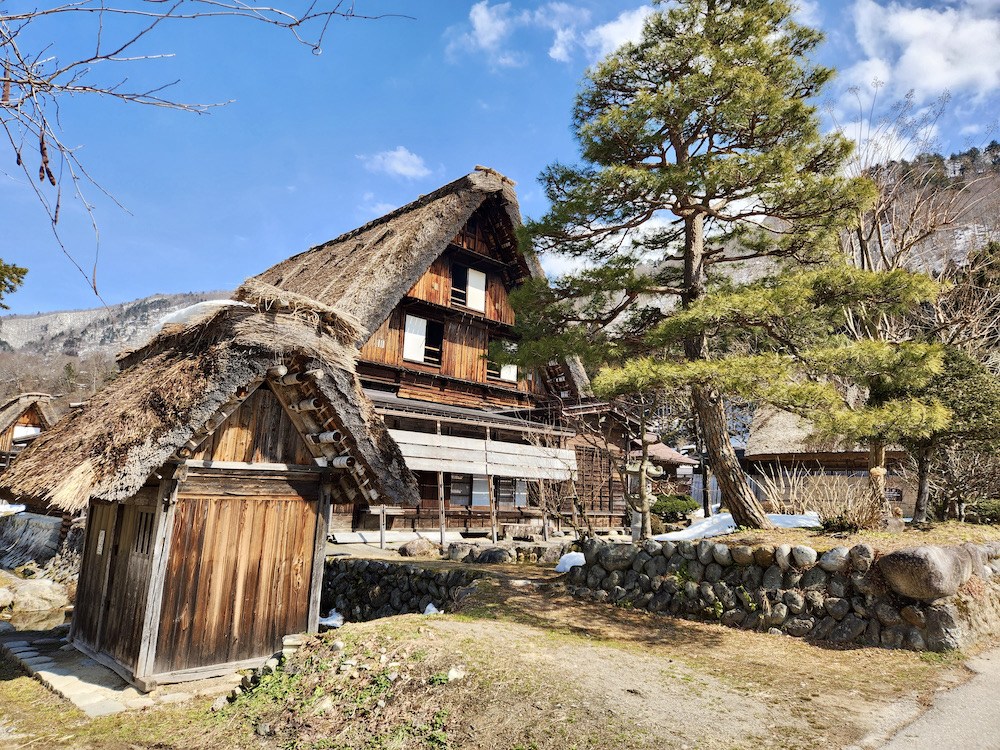
Fun fact: each house has a central hearth for added warmth. The structure of the houses was also specially designed to be self-contained, allowing the residents to ride out the harsh winter.
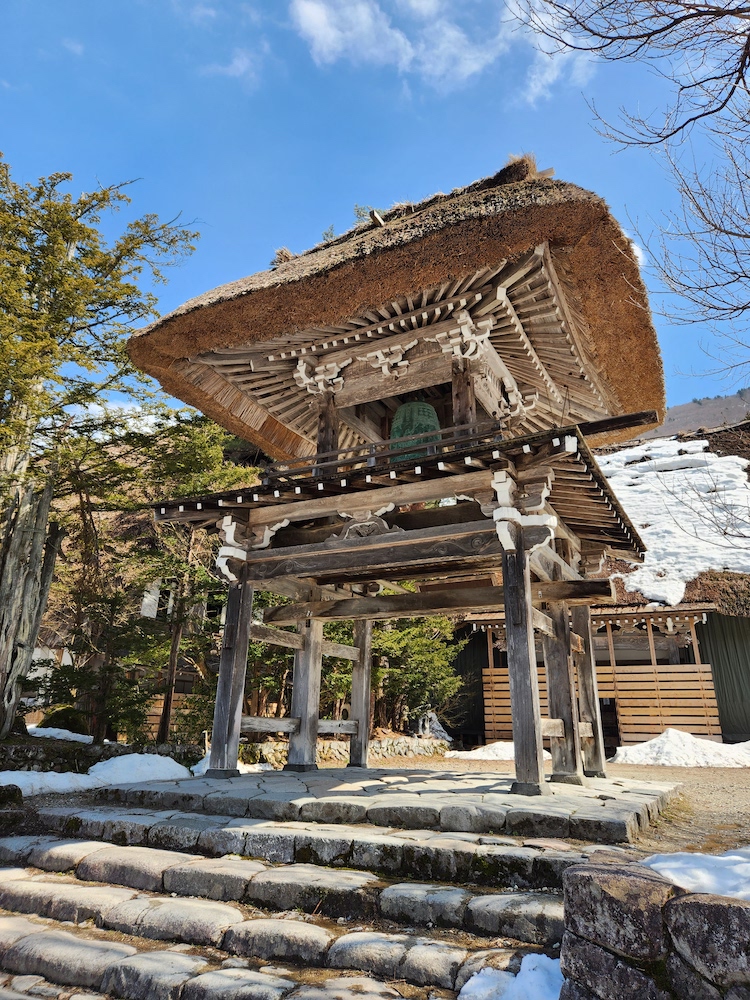
Drop by the Myozen-ji Temple, where the main hall, clock tower, and kitchen were constructed in line with the Gassho-Zukuri style.
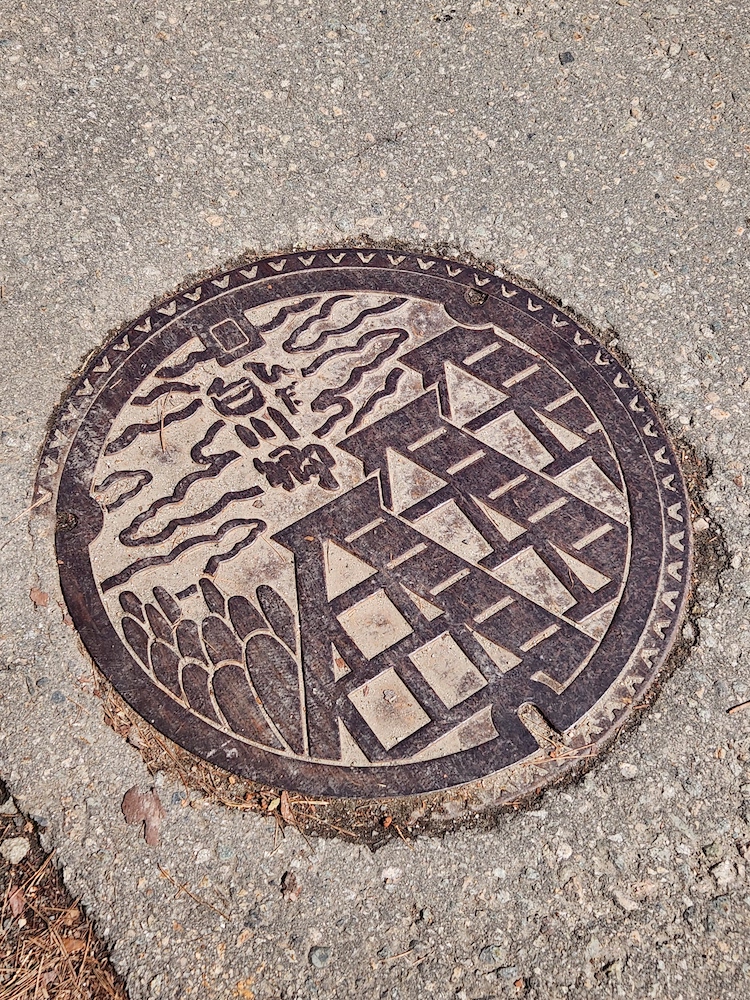
Keep a lookout for the cute man-hole covers too!
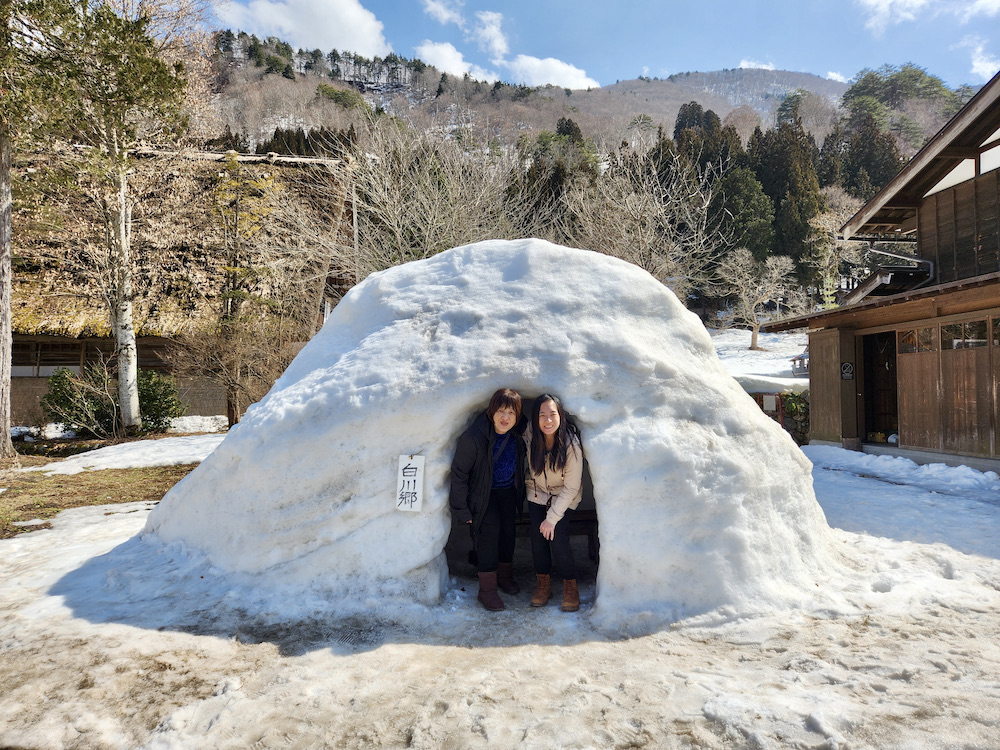
We even chanced upon a manmade igloo that was perfect for pictures.
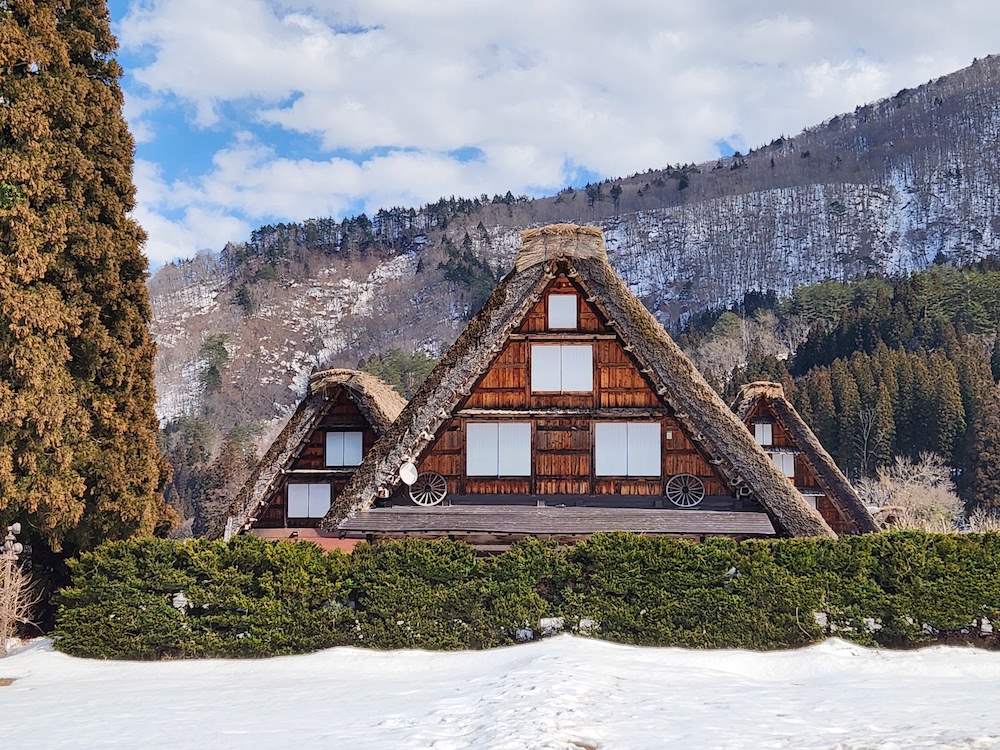
If you’re looking to get away from the tourists, take a slow 15-minute walk to the famous three houses at one end of the village. This is the shot that you’ll usually see in most promotional material of the village.
No matter where you go, remember that the village is still inhabited. Take caution to remain respectful, and not trespass into any private properties or fields. Most shops and restaurants also close around 4pm, so do ensure that you visit the village before then.
How to get to Shirakawa-go
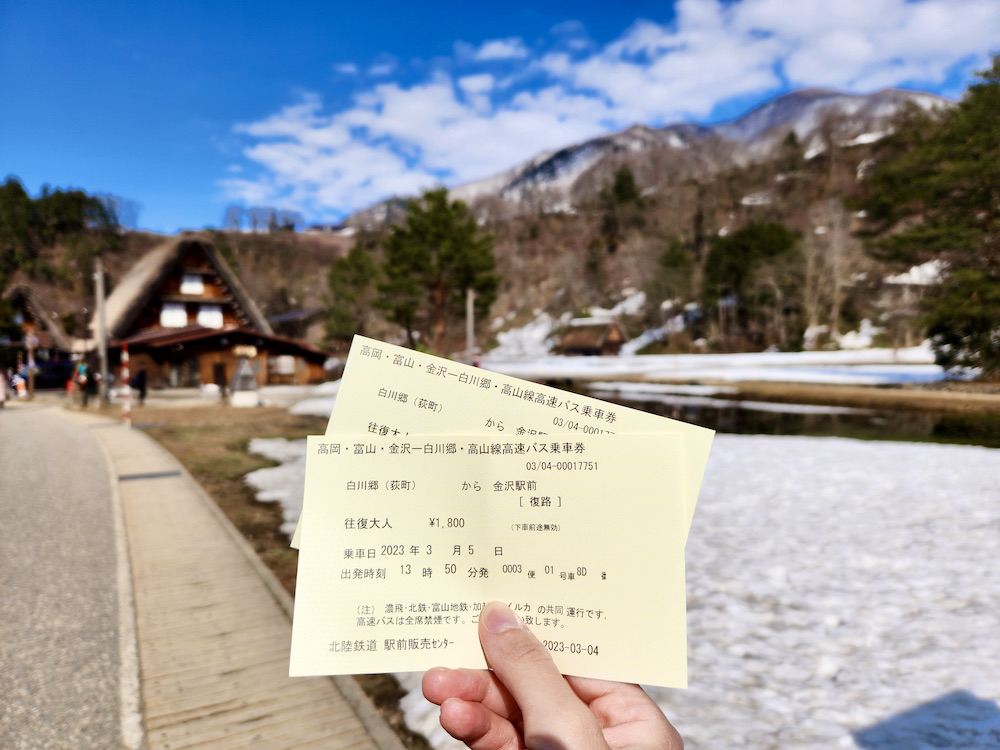
Shirakawa-go can be easily visited on a day trip from Kanazawa or Takayama. We took a 75-minute bus from Kanazawa; do book your bus tickets the minute you arrive in Kanazawa, as they sell out fast.
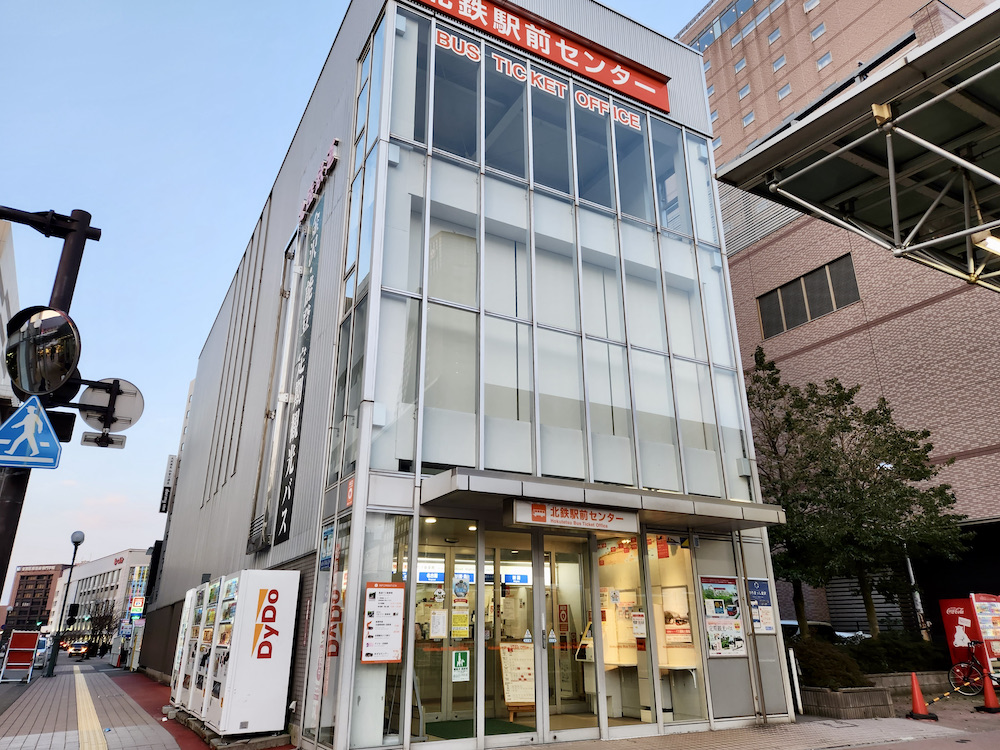
Buy your tickets from Hokutetsu Bus Ticket Office located just next to the main station. Each return bus trip costs JPY1,800 (~SGD18), and comes with a reserved seat. The bus ride from Takayama is otherwise only 50 minutes long.
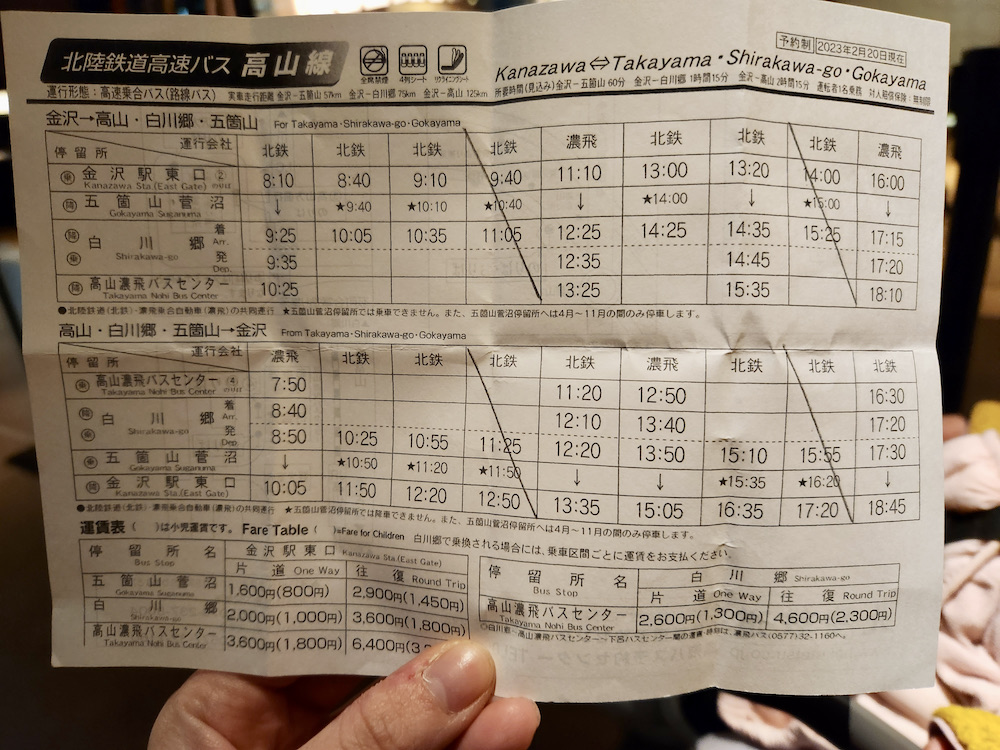
This is the current bus schedule to and from Kanazawa — do check with the bus station for any changes.
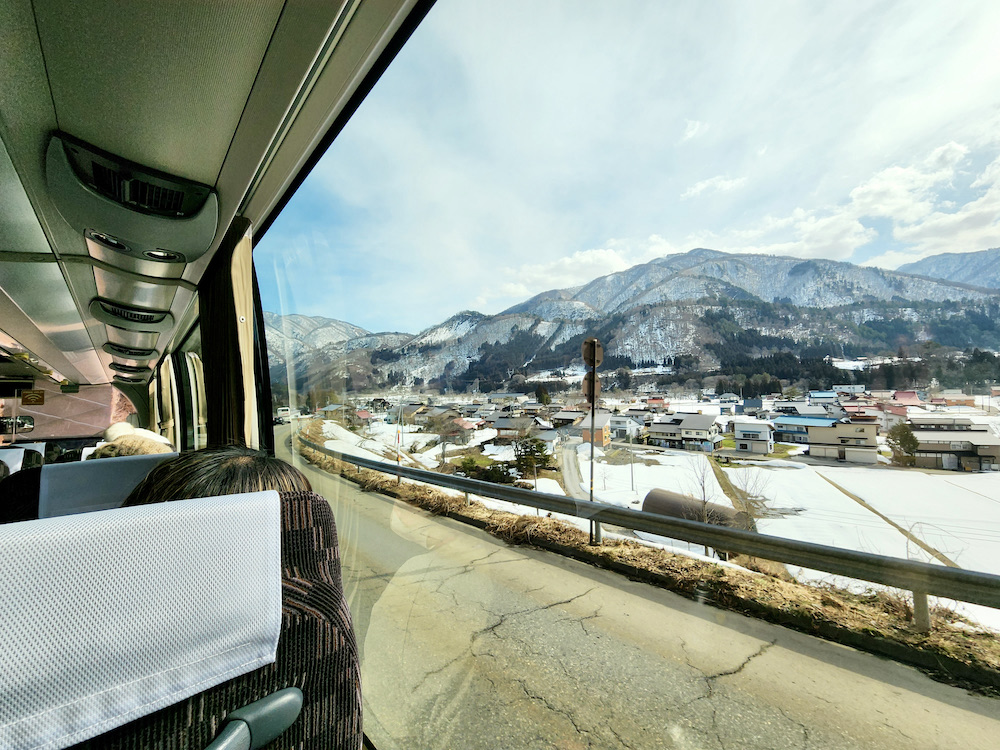
The bus ride is comfortable and fuss-free, and does not make any stops on the way to Shirakawa-go. You'll pass by some stunning scenery on the way too!
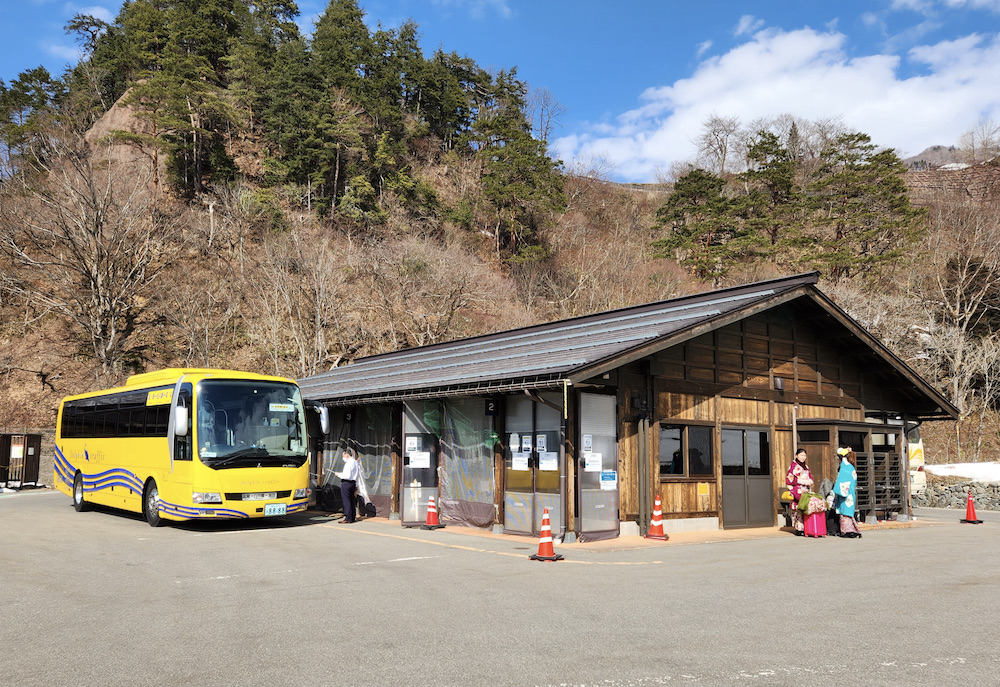
Once you get to Shirakawa-go, you can store your luggages or belongings in the lockers at the bus station. A popular route would be to take the bus from Kanazawa to Shirakawa-go, and spend a couple of hours exploring, before moving on to Takayama; or vice versa.
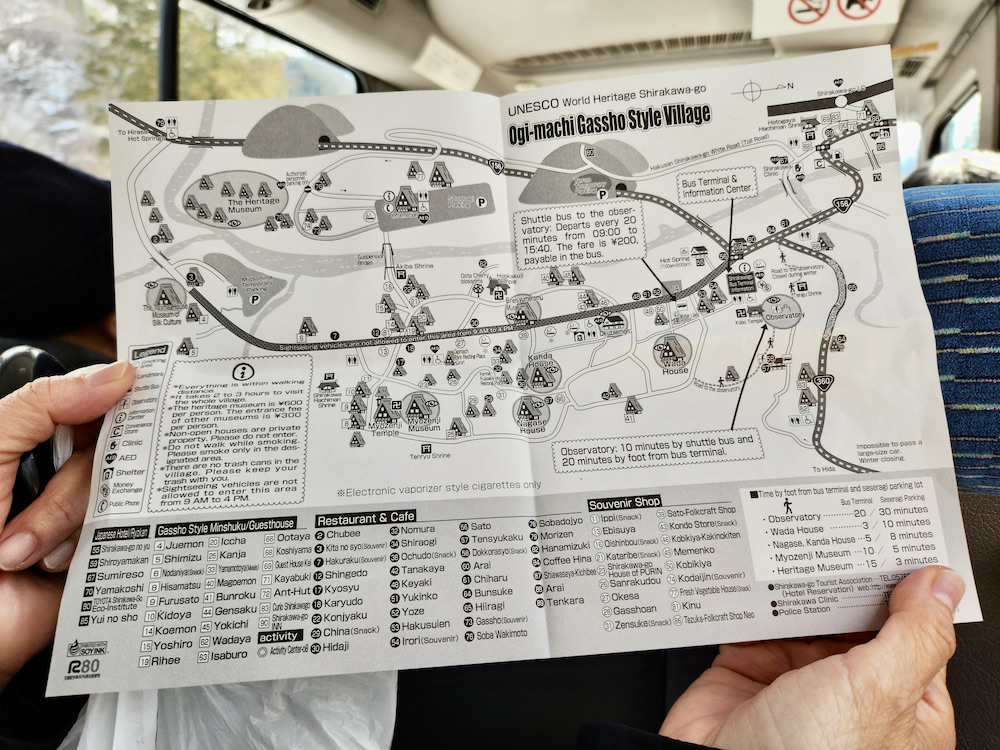
Grab a map from the bus station before you set off to explore.
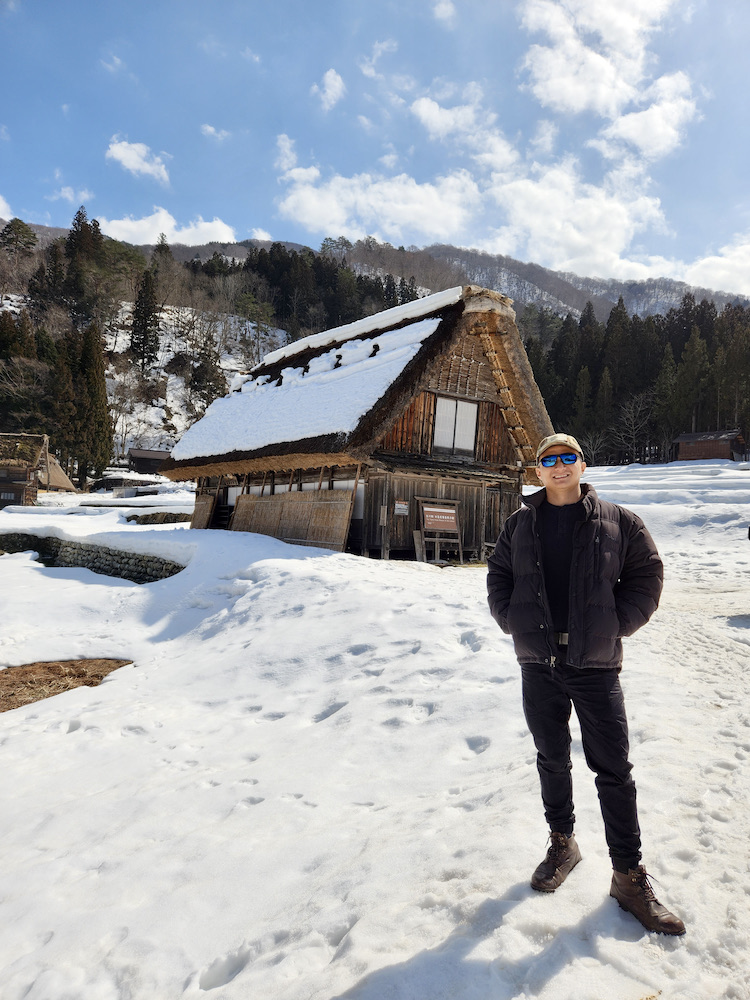
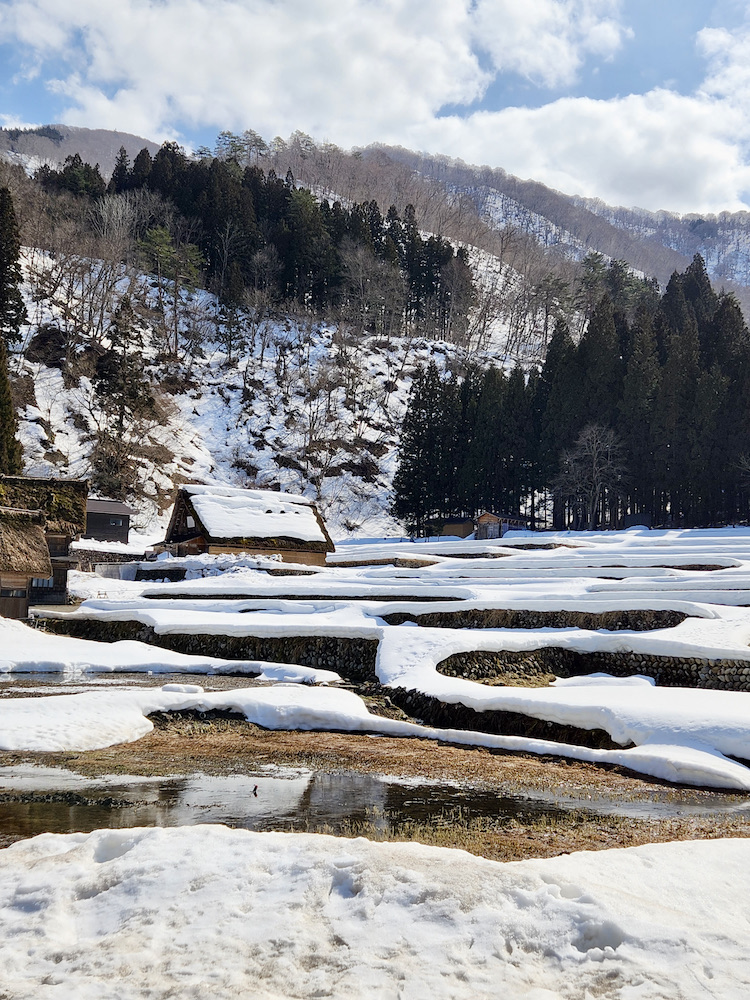
We chose to visit at the beginning of March (at the end of winter, but at the beginning of spring), and were greeted with clear blue skies and snow on the ground. In fact, Shirakawa-go can be visited all year round. Visit in winter to feast your eyes on surreal panoramas of the farmhouses covered with snow; visit in autumn to see the leaves change colour; visit in summer to wander around verdant rice paddies; or visit in spring to marvel at sakura.
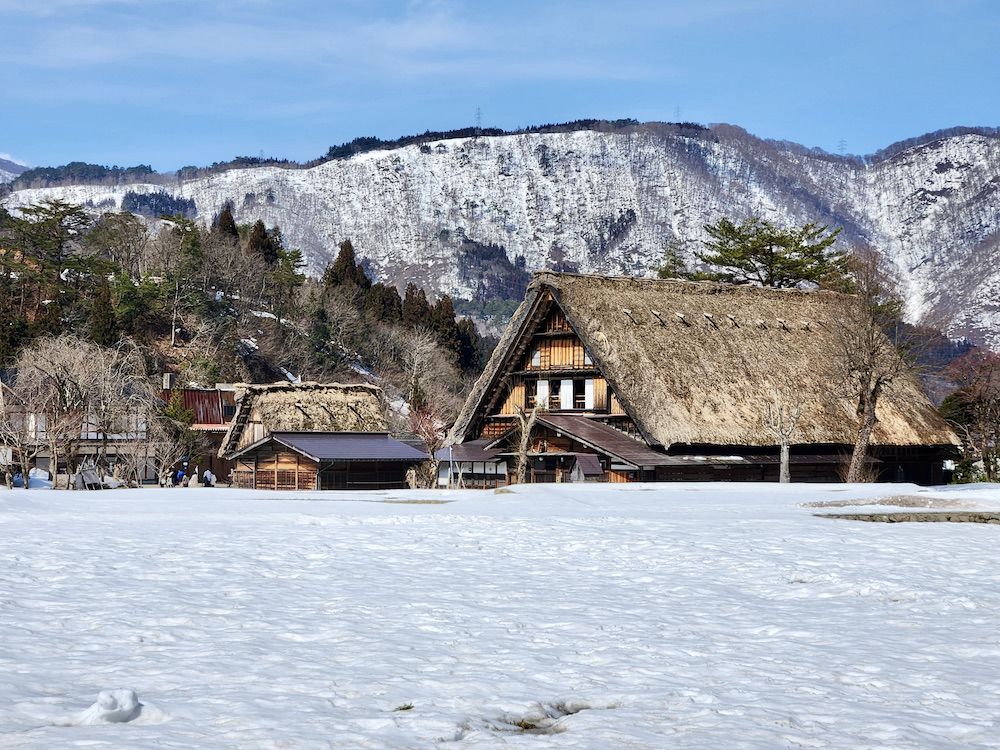
One thing’s for sure: no matter when you visit, a day trip to Shirakawa-go is definitely one for the history books. Indeed, it was one of the most memorable parts of our trip!
